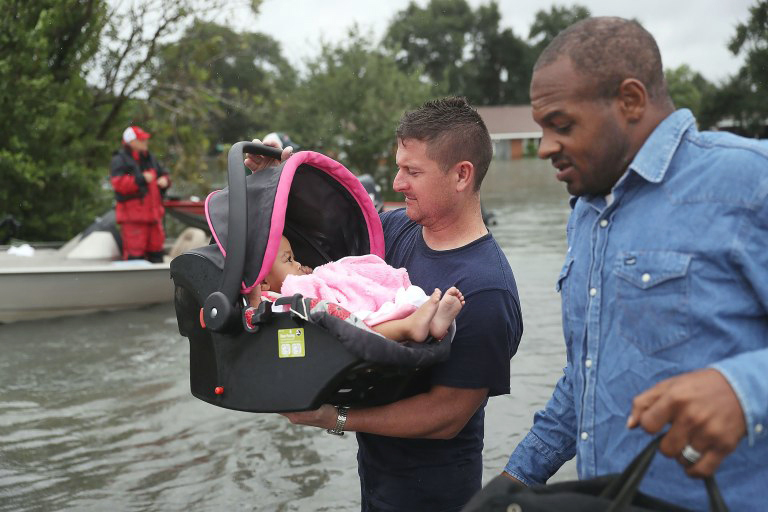Planning prof notes cities’ post-Harvey planning changes

Galen Newman
Hurricane Harvey’s widespread damage forced cities throughout the U.S. to take a more critical look at their infrastructure and hazard mitigation plans, said Galen Newman, Texas A&M associate professor of [urban planning] (http://laup.arch.tamu.edu/) .
In an [article] (https://carolinaangles.com/2018/10/30/hazard-mitigation-and-hurricane-harvey-reflections-on-a-conversation-with-dr-galen-newman/?fbclid=IwAR2FIcMsQ1K9pYRWog-1wmDZAbI_QtWPK-ghTcQ7GtEjKCKoeerIyUc8YG8) that appeared in the [Carolina Planning Journal] (http://carolinaplanning.unc.edu/) , Newman said that since Harvey, which struck Texas in August 2017, cities are encouraging sustainable development that reduces damage to natural hydrology and drainage systems.
“Municipal buyouts in flood-prone areas are becoming more common as well, as cities seek to move people and businesses from high-risk areas,” said Newman, a research fellow of the college’s [Hazard Reduction and Recovery Center] (http://hrrc.arch.tamu.edu/index.html) .
While large-scale infrastructure improvements can be helpful, such as a redesign of Interstate 45 in Houston that will integrate detention ponds and pumps to prevent highway flooding, Newman said that cities must also focus on smaller-scale issues that could endanger individual communities and neighborhoods.
“For example, some lower-income neighborhoods in Houston were especially vulnerable because of their open-ditch drainage system and their proximity to industrial sites that could potentially contaminate floodwaters,” he said.
While every storm is different, focusing on local issues as well as city and statewide mitigation plans puts cities in the most storm-resilient position possible, he said.
[Hazard Reduction and Recovery Center] (http://hrrc.arch.tamu.edu/index.html) -affiliated fellows and graduate students study the full range of natural and technological hazards. Natural phenomena include floods, hurricanes, earthquakes, tornadoes, and drought. Technological hazards include chemical and nuclear plant accidents, transportation accidents, and pipeline explosions.
Richard Nira
rnira@arch.tamu.edu
Tags
- building a better texas
- feature
- housing & urban development
- hrrc gallery
- land development
- landscape architecture & urban planning
- laup gallery
- planning
- sustainability
Related Posts

Study eyes how lower Lake Conroe levels impact economy

HRRC examining implementation of local hazard plans

Grad LAND students design green West Campus master plan

Eagle quotes profs on state’s vulnerability
College partners with TAMU-G on coastal research institute
Follow Us
Facebook Twitter Vimeo Youtube Flickr RSS
Recent Posts

Planning prof heads study of disaster housing aid

A message from the dean

Former student remembered as expert planner

Leading educator named new head of Architecture Dept.





_thumbnail_small.png)
